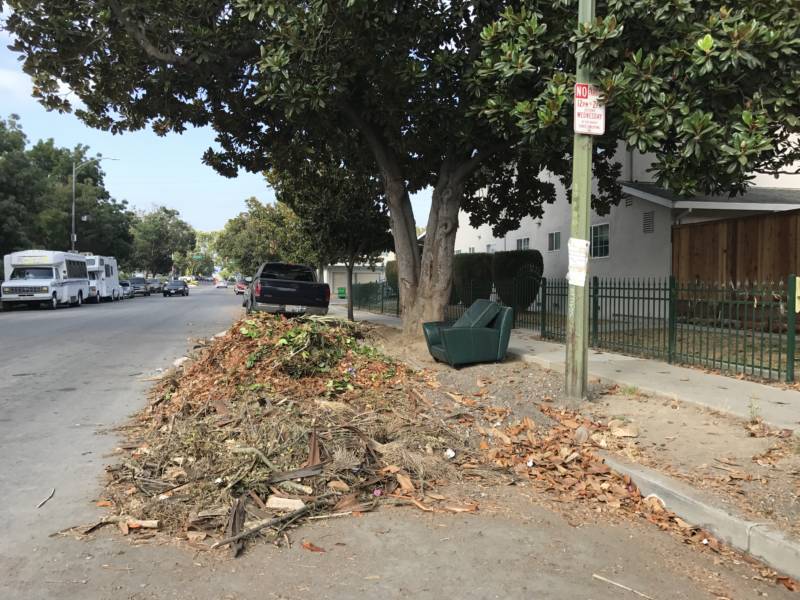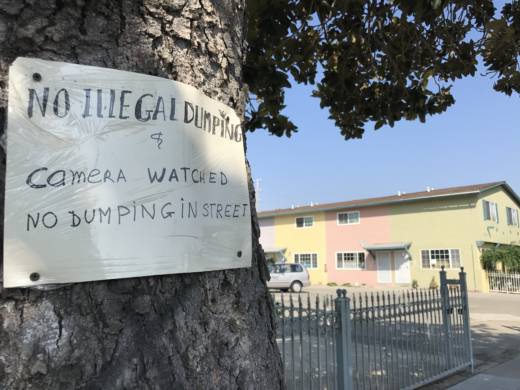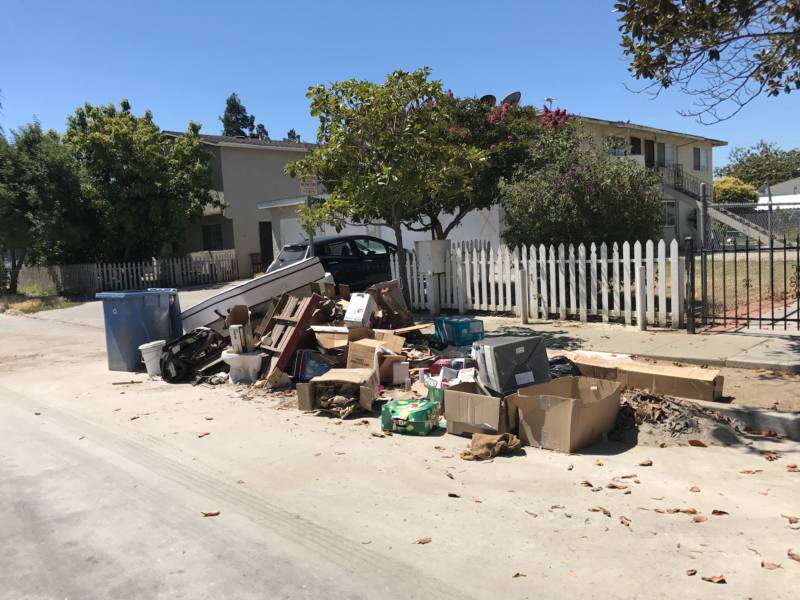During her morning walk, Pairom Sar points in disgust at the dirty green leather chair hanging off the curb. Next to it? A pile of stinky yard waste.
The chair and yard waste weren’t there when Sar went to bed. But most nights trash just seems to appear out of nowhere. She believes the items are dumped by people who don’t live in the neighborhood.
“Some people outside of the flood (zone) come here,” Sar says.

After San Jose’s Coyote Creek flooded on Feb. 21, the neighborhood of Rock Springs was inundated with trash and debris. Residents and construction crews spent months cleaning up and throwing out ruined furniture and belongings, and the city of San Jose provided dumpsters and regular pickups to assist.
But that pickup program ended earlier this summer, and there are still piles of trash. Deputy City Manager Kip Harkness believes the city’s cleanup effort has had an unintended effect.


